Posted August 1, 2025 by Tiffany Lee
In case you missed these stories highlighting research and creative activity at the University of Nebraska-Lincoln, the Office of Research and Innovation’s communications team has compiled a roundup of some top research stories from research.unl.edu and other sources.
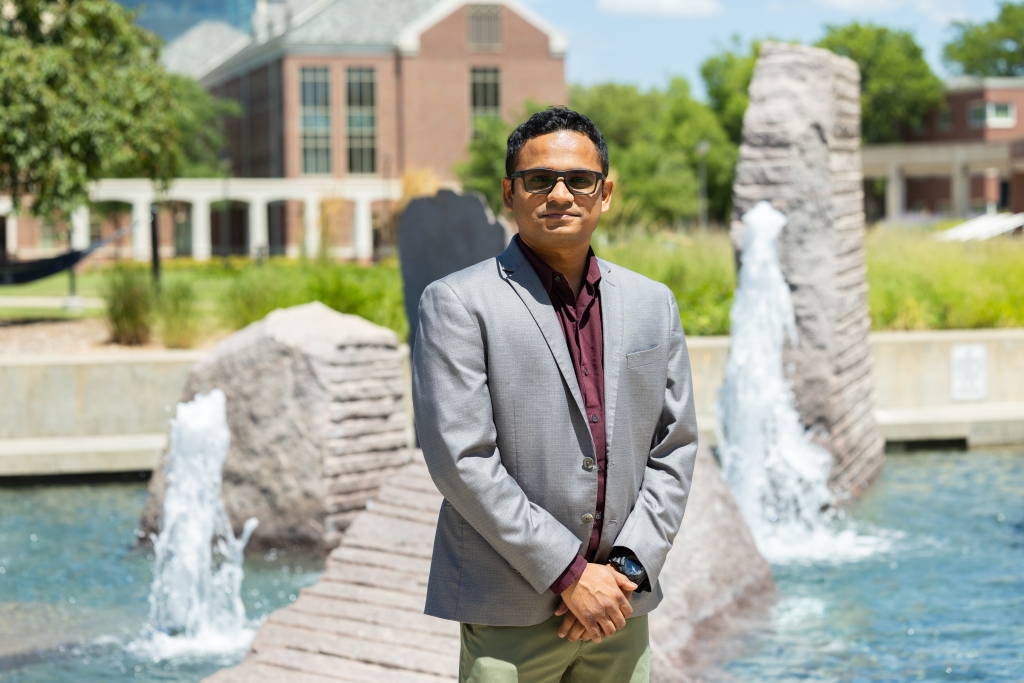
Husker researcher studying impacts of rain-on-snow flood risk
Who: Tirthankar Roy, associate professor of civil and environmental engineering
What: With a $673,168 grant from the National Science Foundation’s Faculty Early Career Development Program, Roy is studying one of the most pressing problems in hydrology: understanding the flood risk posed by rain falling on snow, a threat especially severe in the Midwest. The phenomenon occurs when snowpack on the ground combined with rainfall and rising temperatures lead to rapid snowmelt and exceptional runoff. The most recent widespread rain-on-snow event in Nebraska, in spring 2019, contributed to historic flooding. Roy’s team will conduct a comprehensive assessment of rain-on-snow flood risk in the Midwest, using machine learning and other methods to investigate factors that contribute to these events, their characteristics and how they vary in time and space. He expects the findings to set a benchmark for assessments elsewhere in the world and to lead to better flood mitigation efforts.
“ROS floods are not thoroughly considered in mainstream water resources-related decision-making, and we want to bridge that gap through this comprehensive assessment and the associated outreach activities,” Roy said.
Writer: Dan Moser, Office of Research and Innovation
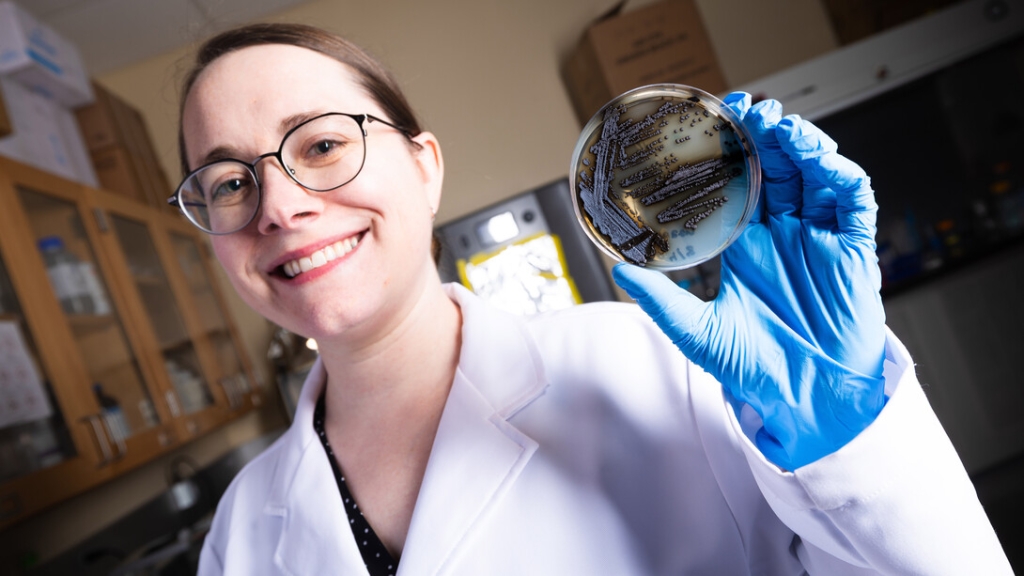
Husker researchers studying fungus that could be melanin resource
Who: Erin Carr, postdoctoral research associate in chemical and biomolecular engineering; Rajib Saha, Richard L. and Carol S. McNeel Associate Professor of chemical and biomolecular engineering
What: With a $1,032,070 grant from the National Science Foundation, Carr and Saha are studying the potential of a novel fungus, Exophiala viscosa, to play a role in the large-scale, cost-effective production of melanin. Melanin – the natural pigment that determines the color of human skin, hair and eyes – has applications in ultraviolet-protective products, advanced materials and bioremediation. But acquiring large quantities of melanin is difficult: The primary source is squid ink, which is expensive and requires a squid’s death to obtain small amounts. E. viscosa is unique among fungi in that it produces, stores and transports out melanin. Carr and Saha aim to study E. viscosa’s excretion of melanin, including identifying the pathways and transcription factors that regulate melanin production.
“We want to figure out how to optimize and increase the melanin secreted out of the cell so that we can use that melanin to do a wide variety of beneficial things for humanity,” Carr said.
Writer: Dan Moser, Office of Research and Innovation
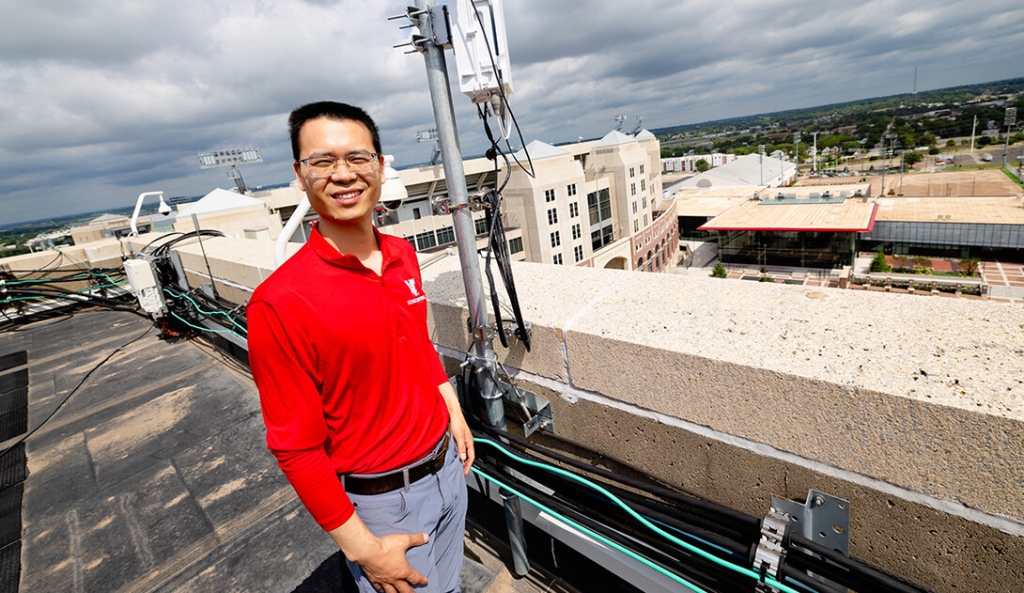
Liu’s research expands, connects autonomous vehicle capabilities
Who: Qiang Liu, assistant professor of computing; Weisong Shi, professor and chair of the Department of Computer and Information Sciences at the University of Delaware
What: With funding from the National Science Foundation, Liu is advancing the new concept of connected autonomous driving. This emerging idea enhances the safety of autonomous vehicle models by allowing them to access a broader network of devices and shared information. Currently, self-driving vehicles use sensors, hardware and AI-based software to perceive and react to their surrounding environments. The software and hardware in these vehicles are tightly linked, limiting upgradability options for drivers. Liu’s strategy would enable adaptive collaboration on the network, allowing vehicles to integrate information from nearby vehicles and roadside structures into the autonomous driving software – improving perception, prediction and planning. Liu’s team will test models using Husker-Net, the university’s own private 5G network that Liu developed.
“The key thing is that we have a convergence between the communications and the computing,” Liu said. “Rather than working individually on a single vehicle, we’re connecting them, and we’re testing how that will work in the real world with real vehicles and a full-size network. It will be quite unique in the United States.”
Writer: Victoria Grdina, School of Computing
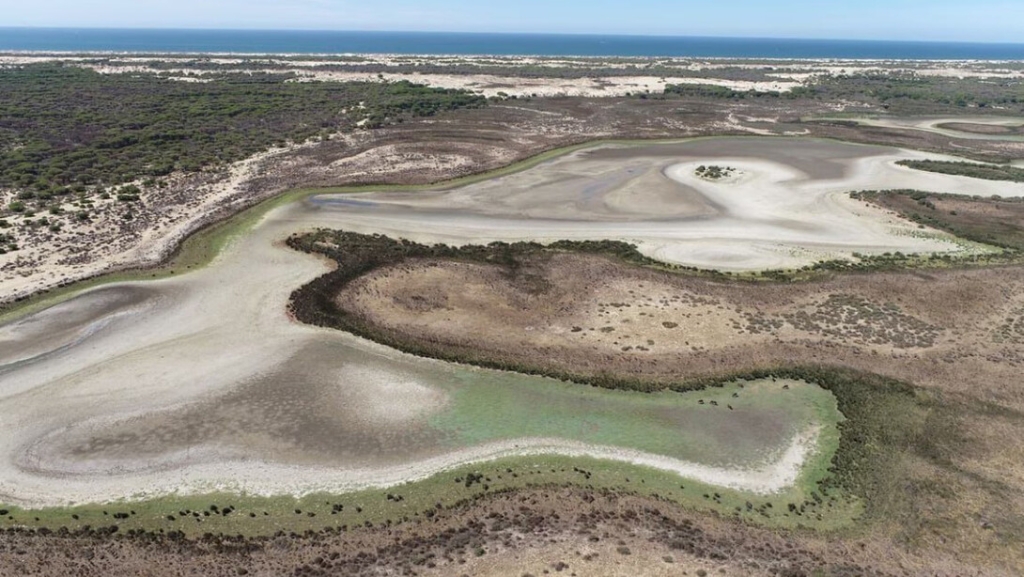
New report details global drought impacts
Who: Paula Guastello, Kelly Helm Smith, Cody Knutson and Mark Svoboda, National Drought Mitigation Center
What: The university’s National Drought Mitigation Center and the United Nations’ Convention to Combat Desertification released a report July 2 outlining the impacts of drought around the world since 2023. Unveiled at the International Conference on Financing for Development in Seville, Spain, the report identifies the regions of the world most severely affected by droughts in 2023-2024 and examines the intersection of climatic drivers and underlying vulnerabilities that contributed to the droughts’ severity. The report contains information crucial for informing future mitigation strategies, improving resilience planning and supporting equitable policy responses. It also explores the many impacts of drought, including social, economic, environmental and health effects – all of which disproportionately harm vulnerable populations.
“As droughts intensify, it is critical that we work together on a global scale to protect the most vulnerable people and ecosystems and re-evaluate whether our current water use practices are sustainable in today’s changing world,” Guastello said.
Writer: Emily Case-Buskirk, National Drought Mitigation Center
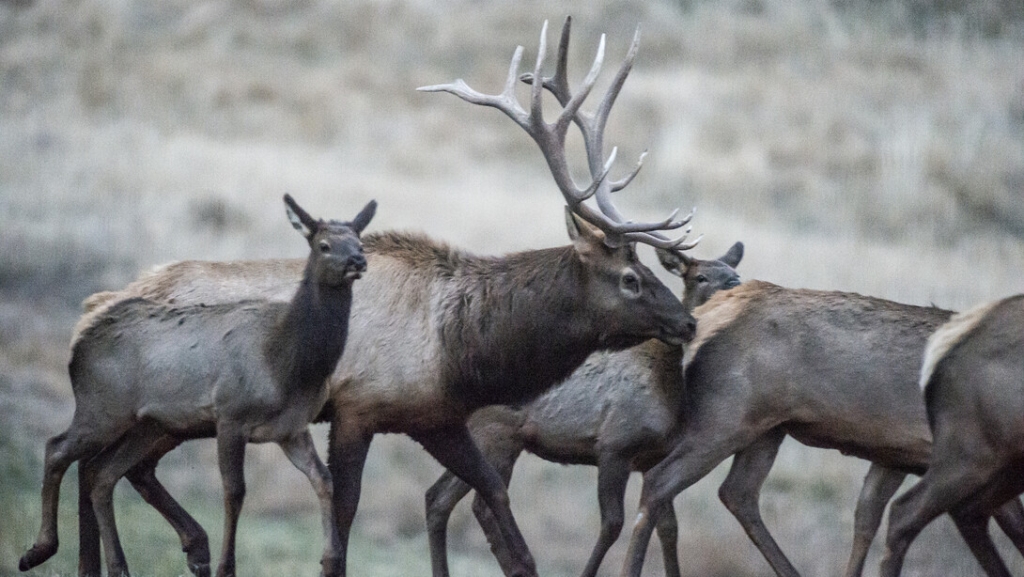
Scientists study movement of elk in agricultural landscapes
Who: Tabitha Hughes, doctoral student, School of Natural Resources; John Benson, associate professor, School of Natural Resources; Luke Meduna, Todd Nordeen and Sam Wilson, Nebraska Game and Parks Commission
What: The research team, a partnership between UNL and the Nebraska Game and Parks Commission, is comprehensively studying elk behavior in Nebraska, including their areas of occupation, movements throughout the state, migration patterns, food acquisition strategies and more. The first findings from the research, which launched in 2022, were recently published. Though elk have been studied extensively in mountainous and coastal populations across North America, little is known about their behavior in prairie-agricultural landscapes like Nebraska. This information is crucial because elk, though highly valued by hunters, can also damage crops. The team outfitted more than 200 elk in Nebraska with GPS tracking collars, which provide highly accurate location information. They found elk in highly variable landscapes across the state and found evidence that agriculture impacts their movement.
“In mountainous landscapes, agriculture appears to reduce the prevalence of migration as many elk will choose to stay near cropland all year when they would otherwise move to higher elevations in the summer,” Hughes said. “But here in Nebraska, we’ve seen the opposite as cropland seems to encourage some elk to move from natural areas into agricultural fields during the summer and fall, and they will sometimes move quite far to do so.”
Writer: IANR News
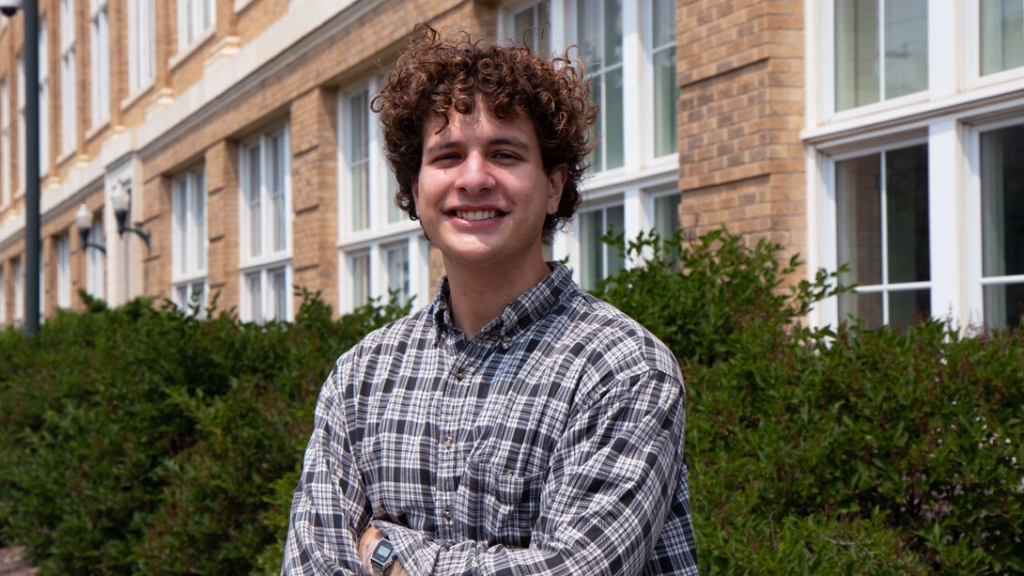
Project searches for solutions to bullying in U.S., South Korea
Who: Jared Noetzel, doctoral candidate in school psychology; Susan Swearer, chairperson and Willa Cather Professor in educational psychology
What: With a grant from the Society for the Study of School Psychology and guidance from Swearer, Noetzel aims to spark an international conversation to help reduce bullying. Because teachers interact daily with students, they can be a powerful force in reducing bullying. Researchers have explored individual-level factors related to teacher response to bullying and have identified international variability in their responses – but the specific reasons behind these differences are unknown. To begin filling that gap, Noetzel will survey 1,900 teachers in the U.S. and South Korea on how they would respond to a hypothetical bullying scenario. He expects his findings to help clarify how national context and self-construal affect a teacher’s decision to intervene.
“I’m just hoping to start an initial conversation about cultural differences,” he said. “The more we know about how culture might impact people’s decisions, the more we can develop systems and make spaces more accommodating.”
Writer: Chuck Green, Nebraska Center for Research on Children, Youth, Families and Schools

NASA grant helps Eriksen spread love for science
Who: Anastasia Eriksen, Husker junior majoring in mathematics
What: With a grant from NASA’s National Space Grant College and Fellowship Project, Eriksen is spending her summer conducting research and educating Nebraskans at Branched Oak Observatory. In this role, she recently helped detect an asteroid that will pass near Earth and is hoping to determine its shape with the team’s data. Eriksen is also a Claire M. Hubbard Environmental Science Communication Intern at Morrill Hall, where she uses special software to create interactive programs that will help inspire the next generation of scientists. Eriksen is also beginning an Undergraduate Creative Activities and Research Experience program this summer under Husker geophysicist Irina Filina focused on the geophysical modeling of Earth’s magnetic field.
“Earth’s magnetic field reverses over the course of millions of years and we have no idea why,” Eriksen said. “We’re going to map out how it’s changed over the last 55 million years and hopefully someone can use that to figure out why this happens. I’m really excited to get started.”
Writer: Matthew Strasburger, University Communication and Marketing





